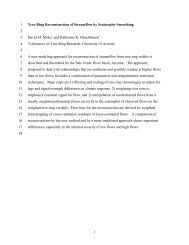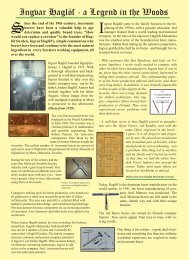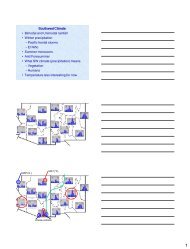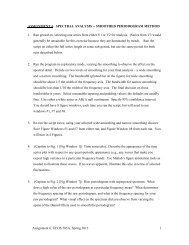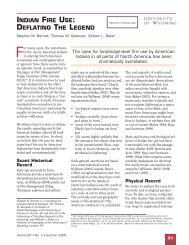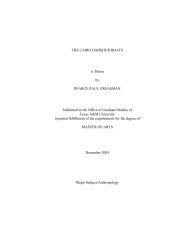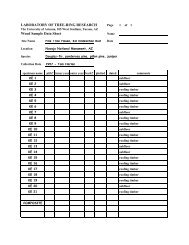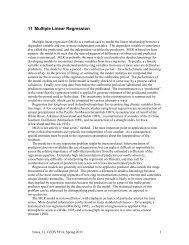[PDF] 6 Spectral Analysis -- Smoothed Periodogram Method
[PDF] 6 Spectral Analysis -- Smoothed Periodogram Method
[PDF] 6 Spectral Analysis -- Smoothed Periodogram Method
Create successful ePaper yourself
Turn your PDF publications into a flip-book with our unique Google optimized e-Paper software.
variations and emphasize the slower variations. The effects are progressively stronger as theparameter gets closer to -1.The theoretical spectrum can be written in terms of the AR parameter, the variance of theresiduals and the sample size. For an AR(1) model,24NS ( f ) , 0 f 1 / 221 a 2 a c o s( 2 f )1 12where is the variance of the residuals, N is the number of observations, a is the1autoregressive parameter, f is frequency in cycles per year (or time unit), and S ( f ) is the2theoretical spectrum. The shape is entirely determined by the AR parameter; and N act toscale the spectrum higher or lower, but do not change the relative distribution of variance overfrequency.Equation (16) can be used to generate a theoretical spectrum for any observed time series.The series is first modeled as an AR(1) process. The autoregressive parameter and variance ofresiduals are estimated from the data. Plots of spectra for different values of a show how the1spectrum varies as a function of autoregressive parameter. The special case of a 0 corresponds1to a white noise process. By analogy with visible light, white noise contains an equal mixture ofvariance at all frequencies. The theoretical spectum of white noise is a horizontal line.For a 0 , the spectrum is enhanced at the low frequencies and depleted at the higher1frequencies. By analogy with the light, the spectrum is called “red noise.”For a 0 , the process tends to create erratic short-term variations, with positive1autocorrelation at even lags and negative autocorrelation at odd lags. The spectrum is enriched atthe high frequencies, and depleted at the low frequencies. Such series are sometimes called “bluenoise.”(16)Notes_6, GEOS 585A, Spring 2013 8


![[PDF] 6 Spectral Analysis -- Smoothed Periodogram Method](https://img.yumpu.com/48640243/8/500x640/pdf-6-spectral-analysis-smoothed-periodogram-method.jpg)

